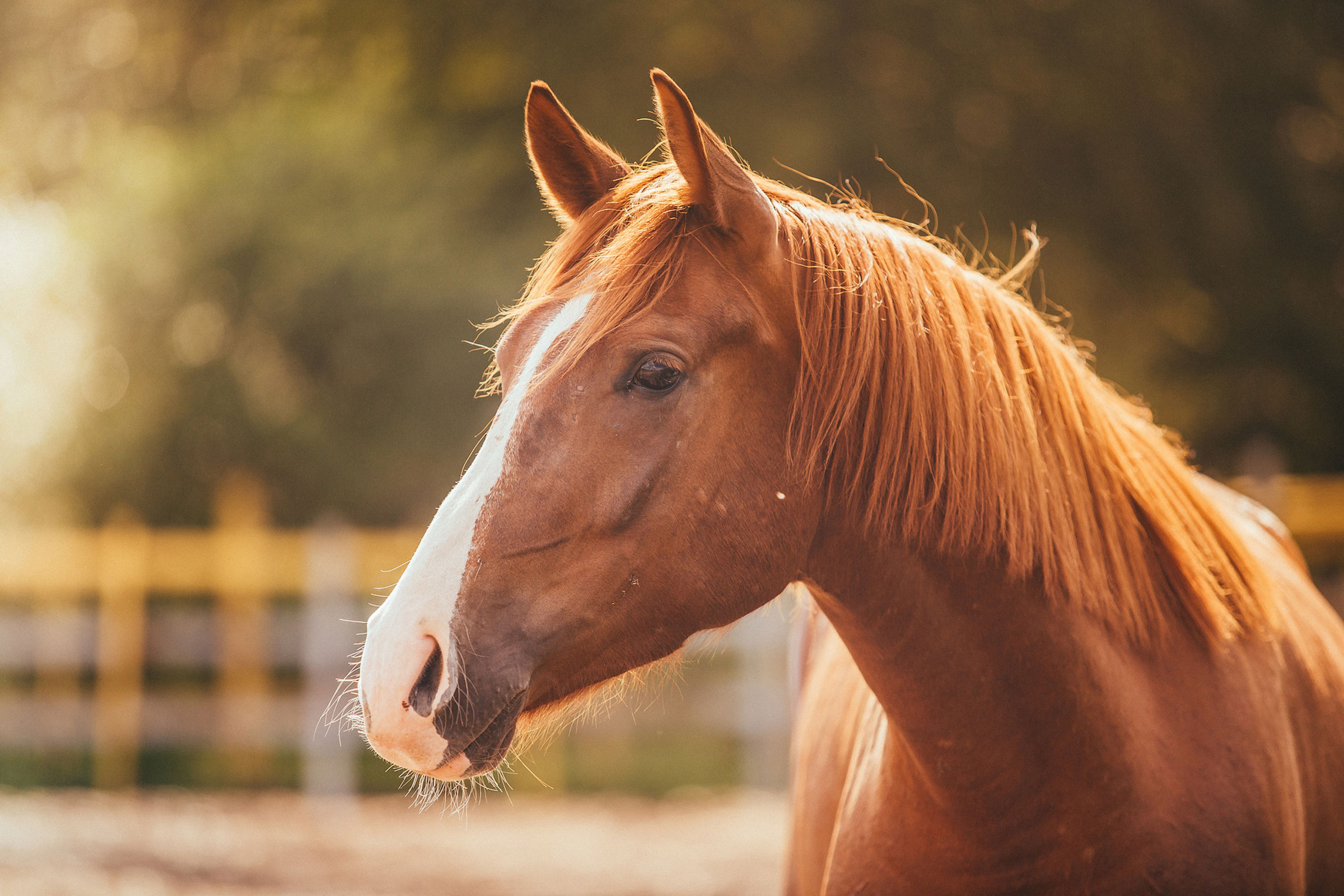
Respiratory diseases can be costly for the horse owner in many ways. The major categories of respiratory diseases affecting horses are infectious (those caused by viruses or bacteria), allergic and parasitic. This article will focus on respiratory issues caused by allergens, but first in order to understand how these allergens affect the respiratory system we must have a basic idea of how it works.
Overview of the Horse’s Respiratory System
The nostrils are where the intake of air begins. Air then moves through a network of thin bones called turbinates. From there, it travels through the sinuses and into the main airway, the trachea. The lower end of the trachea splits into two branches (one to each lung), which then subdivide many times until reaching the air sacs in the lungs where oxygen can be transported into the bloodstream. The nostrils are lined with skin that becomes a moist mucous membrane as it progresses inward. Much of the tract is also lined with tiny hair-like projections called cilia. The nasal passages and sinuses warm and moisten the air as it flows towards the lungs, while the mucus and cilia trap small particles. The cilia move rhythmically to move mucus and particles upward and outward. The horse will then blow (snort) or cough to force these particles out of the system.
What Happens Within the Horse?
Respiratory allergies develop when the horse inhales certain particles, including dust and storage mites, moulds and pollens and the immune system reacts extra-strongly to them. Some allergies are present from birth, but others develop over time. This is why problems are seen most often in older horses.
When airborne allergens get down into the airways, they irritate the cells and cause mucous secretion, which will trigger a snort or cough. In addition, if the horse is allergic to one or more of these particle types, inhaling them will also cause inflammation. Large numbers of white blood cells move into the affected area and some of these cells secrete chemicals that cause swelling. Others produce antibodies to the allergen(s); which causes even more inflammation.
Due to the mucus and inflammation, less air can get through. To make matters worse, the smooth muscles in the walls of the lower airways constrict to prevent the allergens from passing further down into the lungs, which reduces the amount of total air space in the airways and lungs. Wheezing and coughing occur, which then worsen the irritation and inflammation in the lungs. It is a vicious circle in which the body’s own defences ultimately cause the most harm.
A very serious equine lung disease is referred to as “Chronic Obstructive Pulmonary Disease” (COPD), also called “Reactive Airway Disease”(RAD), “Recurrent Airway Obstruction” (RAO),”heaves” or “broken wind” due to the laboured breathing that occurs as the disease progresses.
Practical Management Strategies
The most common horse at risk is a mature horse (usually 6 or older) that is stabled during the winter. However, any horse can develop airway inflammation that can progress to a serious disease over time. While it is always essential to watch your horse for subtle signs of illness, it is also important to understand that significant airway diseases may be present long before obvious symptoms occur. Horses involved in high-intensity activities are particularly susceptible, especially if they live, train or work in cold-weather conditions.
Environmental management is the first step in treatment. Make sure stables have excellent ventilation and keep doors, half-doors and windows open as much as possible. If the weather is cold, it is better to blanket the horses than to close off sources of fresh air. Good hygiene (frequent removal of damp or soiled bedding) is also important. While stalls are being cleaned, the horse should be removed until the dust settles. Hay for other horses in the barn should be stored away from the stables and kept as dry as possible. To minimize dust use wood shavings, shredded paper or rubber mats for bedding instead of straw. Indoor riding arenas can also be extremely dusty.
What to Feed?
A horse with respiratory issues may benefit from a pelleted forage source such as alfalfa pellets or cubes instead of alfalfa hay which may be dusty. Hay should be thoroughly wet down to decrease dust and carefully inspected prior to purchase for signs of mold. Where possible all feed should be wet down to decrease airborne particles in the feed trough. Adding vegetable oil to feed and mixing it in well can also help to decrease airborne particles.
Nutritional management strategies to treat respiratory issues are centered around decreasing inflammation. Omega 3 fatty acids help synthesize hormones, transport oxygen from red blood cells to tissue, control inflammation and boost immune function. Prostaglandin plays one of the most important roles in inflammation and is produced from omega-6 fatty acids. Dietary supplementation of omega-3 fatty acids can offset the inflammatory response in several ways. Increased concentrations of omega-3 fatty acids compete with omega-6 fatty acids to produce prostaglandins.
Nutritional support in the form of antioxidants can also help diminish symptoms and in some cases strengthen the immune system enough to decrease an allergic response. The trace mineral selenium has an important role in immune response and works with vitamin E to reduce oxidative stress. Vitamin C, vitamin E and folic acid work together to support immune cell activity and tissue health during immune compromise.
This article was written by Dr. Tania Cubitt of Performance Horse Nutrition.


